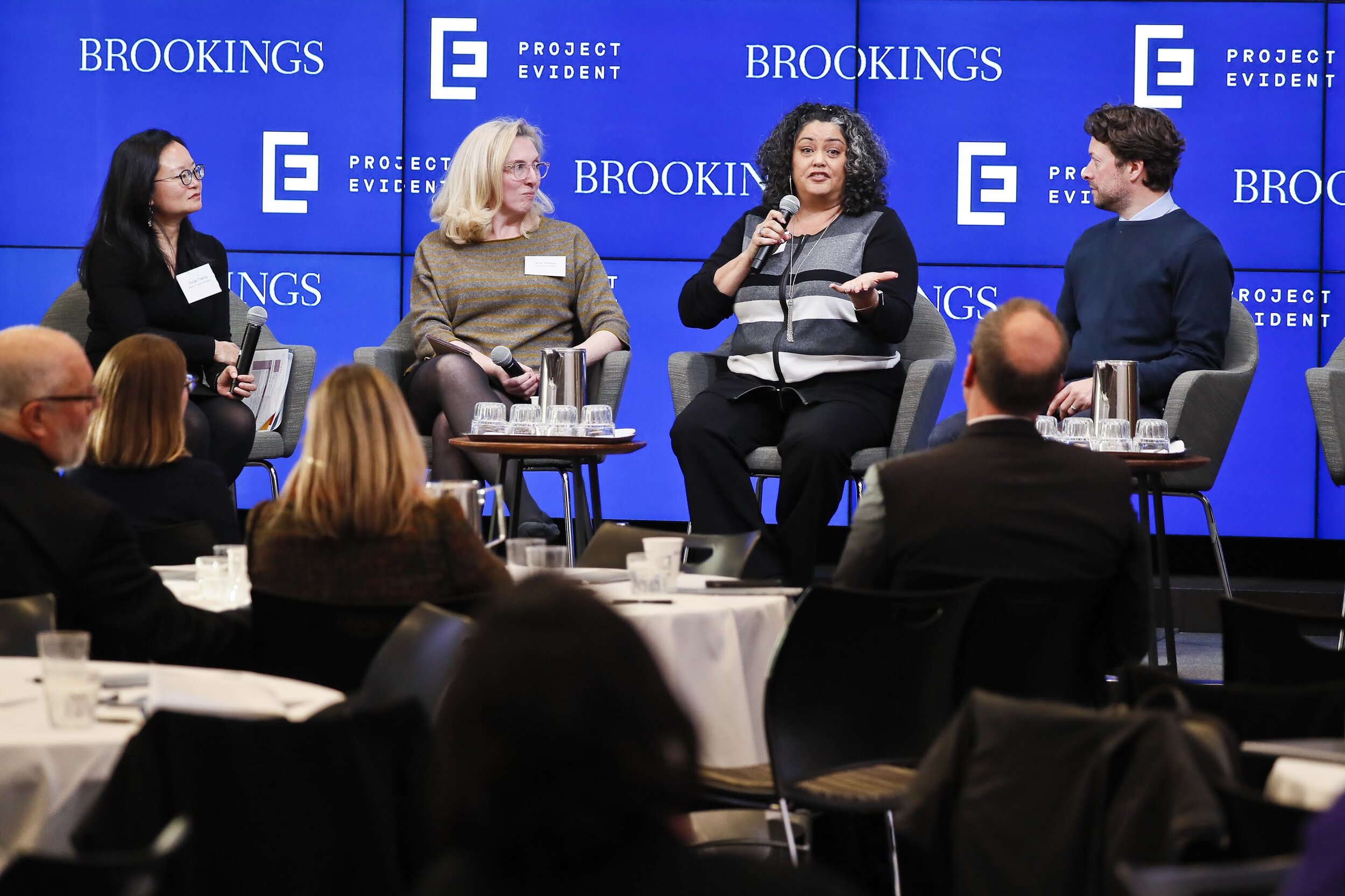NextGen
The Next Generation of Evidence Will Be Practitioner-Led

After learning about a new data-sharing agreement between St. Paul’s schools and government, education justice advocate Marika Pfefferkorn became concerned. She felt that the agreement, which had gone into effect with little community involvement or awareness, had the potential to perpetuate racial disparities in Minnesota’s educational and criminal justice systems – specifically through predictive analytics using school suspensions as a way to identify children at risk for involvement in the juvenile justice system. In response, Marika co-founded the Coalition to Stop the Cradle to Prison Algorithm (CPA Coalition), which led a successful grassroots movement to overturn the agreement and to ensure community members are formal partners in future efforts that use their data.
Marika’s story was just one of many shared at Project Evident’s recent Next Generation of Evidence convening that demonstrates the need for a new approach to evidence building that puts practitioners at the center, supports social sector R&D, and elevates community voice. Co-hosted with the Center on Children and Families at the Brookings Institution with support from the William T. Grant Foundation and Arnold Ventures, the gathering built on years of exploration and efforts to advance the use of evidence to drive funding and policy, and to increase the supply of evidence-based programs. Our goal was to invite a diverse group of leaders and innovators to think collectively about what a possible future might look like – one that flips the script and puts practitioners and communities at the center of those programs.
Over the course of the day, we heard from an incredibly knowledgeable and committed group of experts on their work to advance evidence-based practice. The day started off with practitioner leaders discussing evidence-building efforts underway within their own organizations – a way to ground the discussion in the real-world challenges and successes many in the social sector face. Jon Gettle, Chief of Staff at Prosecutor Impact, expressed why evidence building was a strategic priority for the three-year old organization: “Collecting data and evidence helps us answer questions, as well as figure out the questions we haven’t asked yet.” By focusing on how data can help answer those fundamental questions from the beginning, Prosecutor Impact will be able to identify those services that are a critical pathway to targeted outcomes, with processes to support ongoing learning built in from day one. During a panel focused on evidence generation and use in education, Mark Schneider, Director of the Institute of Education Sciences, pointed out that the the spectrum of evidence building is not always a linear journey, but is often much more messy. “Most science agencies believe that research follows a ladder: exploration, development, efficacy, and effectiveness,” he said. “I asked my staff what happens in this process – how often we go from step 1 to 2 to 3 to 4. Very few things get to the top (to effectiveness trials) and most of them fail. This neat structured pattern is not reality-based. In reality the image is not one of steps in terms of evidence gathering – it’s more like a spaghetti bowl. It’s twisting and turning, forward and back.”
Speakers touched on a wide range of topics such as supporting social sector R&D, expanding the preference for use of evidence in grants and contracts, and the role of philanthropy, private sector, and government in supporting the next generation of evidence leaders. Former Speaker of the House of Representatives Paul Ryan applauded the bipartisan support for evidence at the federal level that led to enactment of the Foundations for Evidence-Based Policymaking Act of 2018, and reflected on how evidence has the potential to transcend politics in this time of increased partisanship and divisiveness. Megan Smith, Founder and CEO of shift7 and Former United States Chief Technology Officer, noted being surprised by “how much was already solved but not connected” across our country. She shared exciting examples of how communities across the country are using data and evidence in innovative ways and challenged the room to consider how we can better recognize the collective genius that exists and share it faster. New York Times reporter Jim Tankersley emphasized the importance of storytelling in data and evidence: “If you want people to engage with data,” he said, “you need to tell them a story and listen to theirs.”
The United States has a robust evaluation industry, but one that often puts practitioners in the caboose of the evidence train when they should be in the engine – setting the course and driving an outcomes agenda, with better support from funders, policymakers, and the research community. Ron Haskins, our partner at the Brookings Institute and a long-time champion of this work, has said that in his way of thinking about evidence-based policy, “The single most important player is the group of people who establish and run programs that actually deliver services. All politics might not be local, but all program implementation is.” By breaking down silos and building stronger partnerships between practitioners, researchers, funders, and policymakers, we can create a new generation of evidence building that is more equitable and impactful – one where community members have a voice at the table, innovation is continuously shared, tested, and scaled, and where practitioner leaders are supported in their use of evidence to drive outcomes for the communities they serve.